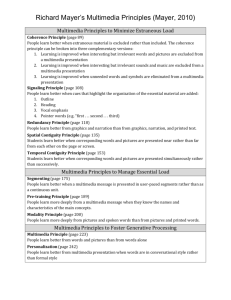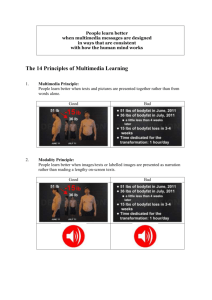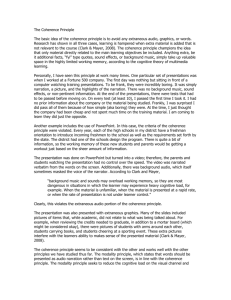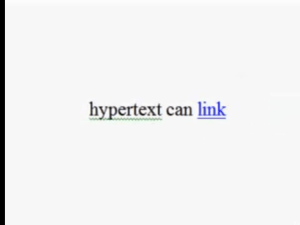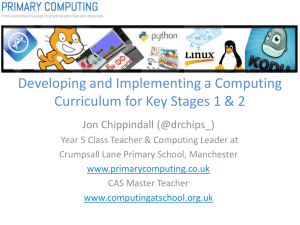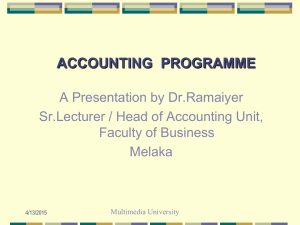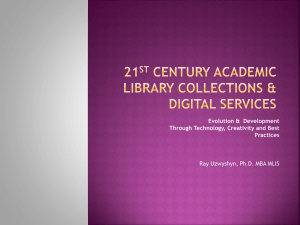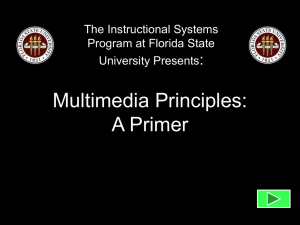Principles for Reducing Extraneous Processing in
advertisement
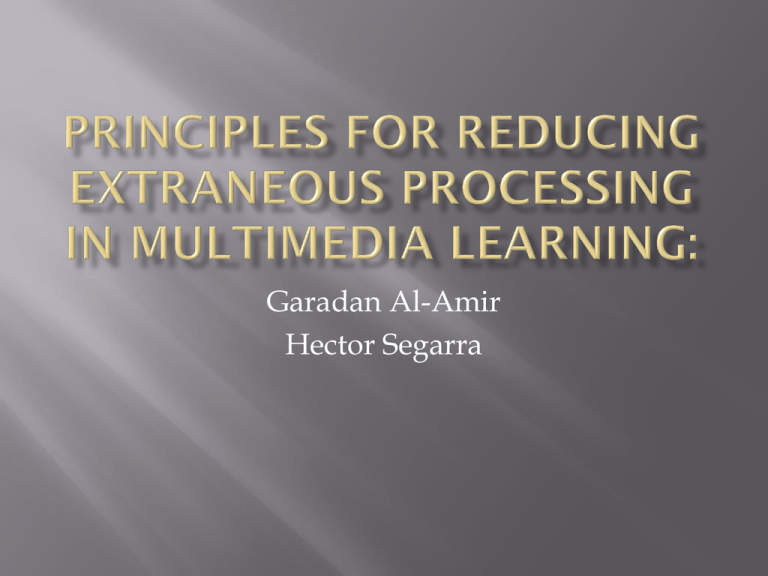
Garadan Al-Amir Hector Segarra Is to create instructional messages that are sensitive to the caracteristics of the human information- processing system, so that the amount of processing required in each channel of working memory does not exceed the learner’s cognitive capacity. Occurs when the amount of cognitive processing requiered by the essential and extraneous material in a multimedia instructional message exceeds the learner’s cognitive capacity. Coherence Signaling Redundancy Spatial Contiguity Temporal Contiguity Principles States that: People learn more deeply from a mutimedia message when extraneous material is excluded rather than included. To eliminate words, pictures, and sounds that are not relevant to the instructional goal. States that People learn more deeply from multimedia messages when cues are added that higlight the organization of the essential material. Insert cues that direct the learner attention toward the essential material. States that: People learn more deeply from graphics and narration than from graphics, narration, and on screen text. According to the redundancy principle, students will learn more deeply from the nonredundant presentation than the redundant presentation because the redundant presentation requiere more extraneous processing. With the Coherence and Redundancy principle, the extraneous material is eliminated. With the signaling and spatial contiguity principle ,typographic and linguistic cues draw learners’ attention to the essential material. With temporal contiguity, the need for holding material in working memory for extended periods is eliminated. States that: People learn more deeply from a multimedia message when corresponding words and picture are presented near rather than far from each other on the page screen. States that: People learn more deeply from a multimedia message when corresponding animation and narration are presented simultaneously rather than successively. States that: Refers to “avoiding formats that require learners to split their attention between, and mentally integrate, multiple sources of information” Refers to the need to integrate material from disparate sources, which is a broader concept than temporal contiguity. 1) Name and describe the five multimedia design methods to minimize extraneous overload. 2) What is the major challenge for an instructional designer? 3) There is strong and consistent evidence of the coherence principle that states: “People learn more deeply from a multimedia message when extraneous material is excluded rather than included”. Why you think this is the case? (Mayer, 2009, Multimedia Learning 2nd Ed.) 4) What does split- attention refers to? 5) What was the research reviewed in this chapter? Mayer, (2009). Multimedia Learning 2nd Ed.

